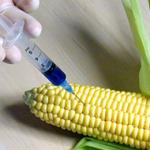Would not that be a better protection from the pesticide to grow cotton and corn containing Bt gene? asked Prof. Dr. Selim Çetiner from Sabanci University who made a presentation in the panel Genetically Modified Organisms and Their Usage in Foods, organized by the Chamber of Food Engineers on 24th of the May in 2003.
Prof. Çetiner was right while warning against the hazards caused by the intense use of pesticides. But his claim that the transgenic agriculture alternative (crops containing Bt gene) he suggested provides a less frequent use of pesticide, was open to debate.
The Independent Science Panel published a report based on 200 scientific investigations, three weeks after the panel. Director of the team that prepared the report, Dr. Mae-Wan Ho from the Institute of Science in Society asserted: We formed the Independent Science Panel because we lost our faith in the official processes.
A member of the same team, Dr. Peter Rosset who is the director of the Institute for Food and Development Policy said that the report will end the belief that genetically modified foods and crops do not cause any harm for human health nor for the environment.
Transgenic agriculture, which has no effect on the use of pesticide in growing corns and provides a meager decrease of pesticide use in the case of cotton plant, is said to increase the use of herbicide. Soy bean brand Roundup Ready by Monsanto requires two to five times more use of herbicide compared to other methods for fighting resistant weeds, the report shows. Roundup Ready corn when compared to the corn which is not transgenic, requires 30 percent more herbicide, documents of 2000 by the US government show.
Now, more than half of the total soy product of the world, is at the top of the list of crops that contain herbicide dramatically more than the previous years. Long after the legally authorized level of gliphosate in the soybean increased 200 times more, there has been a debate on the issue in England.
The debate in England reached its peak on 21st of July 1999 in a discussion session in the House of Lords. After Lord Donoughue, the Minister of Agriculture, confessed the dramatic increase in the level of gliphosate, Lord Mackie asked him: Then can the minister tell us why the legally accepted level was so low before?
The minister grabbed a critical point of the issue and answered the question: The previous level- I think it was 0,01- was practically zero. We were in conformity with that level before the issue was brought to discussion. Then it became a matter of trade. The low level made it difficult to export the soy beans to the other countries, for example to US. After it was brought to discussion, level was taken to a more reasonable amount by multiplying it by 200.
Lord Clement-Jones asked the last critical question in the discussion session to Donoughue: Was the minister aware of the fact that in the panel to evaluate the pesticide cases organized by the England Health and Security Administration, gliphosate was one of the major sources of complaint? Given the conditions, is the correct level of gliphosate- or Roundup, I guess this was the word minister wanted to adopt- in the soy beans or other crops not an issue to consider? This brand we talk about is produced by Monsanto. Dont you think that the government should re-evaluate if this level is correct or not?
My Lords, our government is approaching very sensitively to the hazards concerning health and security issues. Yes, Roundup; I did not want to give a plug to the company marketing this brand. We want to look at the issue fixing our focus on soy. Consultancy committee focuses on the security concerning gliphosate. This is a PO and this is why we take the issue as a whole. Donoughue answered.
From the records of this discussion session, which is an insightful document on the lobbying power of a biotechnology giant in England like Monsanto, we turn to the report by Independent Science Panel again. But we shall make a short summary first.
Contradictory to what Çetiner found out, there are two reasons for the ever increasing use of chemicals in the transgenic agriculture compared to the past.
* Thanks to the genetic modification, some crops gain gretaer immunity to the chemicals which in turn require a greater amount of use of the same chemical (Case of Roundup Ready). This is the goal of the companies who both develop the mentioned crops and produce the agricultural chemicals (like Monsanto).
Looking at the companies in the world seed market and world chemical agricultural products market, we see that five of them share the top in both of the categories (Syngenta, Monsanto, DuPont, Bayer, Dow). (1)
* The uncontrolled gene transfer from the transgenic crops to the natural species lead to the emergence of super resistant weeds that are immune to the agricultural chemicals. Elimination of these troublemakers require use of greater amounts of chemicals.
On the other hand, consequences of wider and greater use of chemicals are beyond its potential impact on the human health. Herbicides and pesticides lead to extinction of some species of plants, insects and animals which in turn decreases the biological variations.
European Commission, in May 2000, has decided to initiate an investigation on the growing transgenic and non-transgenic crops together. Institute for Prospective Technological Studies, institute that made the investigation, has presented its final report in January 2002 along with a recommendation telling the Commission not to reveal the results to the public. The report, which was revealed by the Greenpeace, said that the transgenic and the non-transgenic agricultural products could not live together in most of the cases. Even in the cases where it was possible, it is a financial burden to prevent the gene transfer among them and it increases the costs of production.
Transgenic agriculture is only another blow to agricultural products variation and efficiency of the soil which were already harmed by the common practice of growing one or two types of crops in large agricultural fields in the last century. It impacts the biological variation one more time which was hit by the great use of pesticide and herbicide already. (ŞA/EK/OA)
___________________________________
1. The Largest 10+1 Companies in the World Seed Market and Their Income in 2002
1. DuPont (Pioneer)/USA; Income 2,000$ million
2. Monsanto/USA; Income 1,600$ million
3. Syngenta/Switzerland; Income 937$ million
4. Seminis/USA; Income 453$ million
5. Advanta/Holland; Income 435$ million
6. Groupe Limagrain/France; Income 433$ million
7. KWS AG/Germany; Income 391$ million
8. Sakata/Japan; Income 376$ million
9. Delta&Pine Land/USA; Income 258$ million
10. Bayer Crop Science/Germany; Income 250$ million
11. Dow/USA; Income 200$ million
10 biggest companies, with their 7$ billion volume of trade, cover the 31 percent of the world market.
Source: Action Group on Erosion, Technology and Concentration
The Largest 10 Companies World Chemical Agricultural Products Market and their Income in 2002
1. Syngenta/Switzerland; Income 5,260$ million
2. Bayer/Germany; Income 3,775$ million
3. Monsanto/USA; Income 3,088$ million
4. BASF/Germany; Income 2,787$ million
5. Dow/USA; Income 2,717$ million
6. DuPont (Pioneer)/USA; Income 1,793$ million
7. Sumitomo Chemical/Japan; Income 802$ million
8. Makhteshim-Agan/Israel; Income 776$ million
9. Arysta LifeScience/Japan; Income 662$ million
10. FMC/USA; Income 615$ million
6 biggest companies, with their 27,8$ billion volume of trade, cover the 70 percent of the world market.
( Source: Action Group on Erosion, Technology and Concentration )







